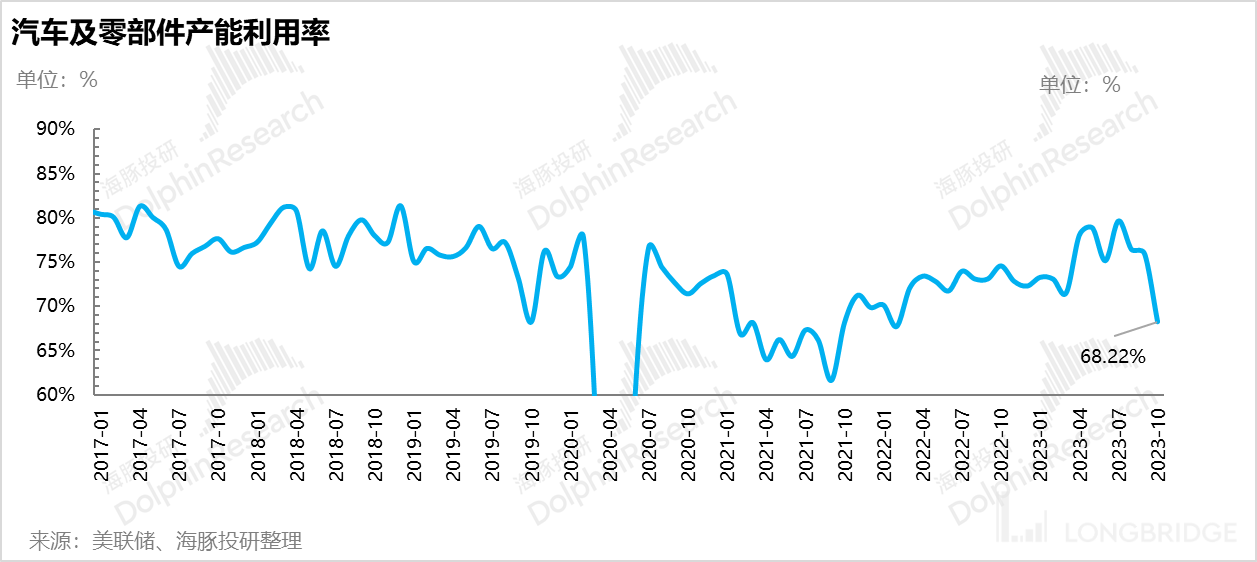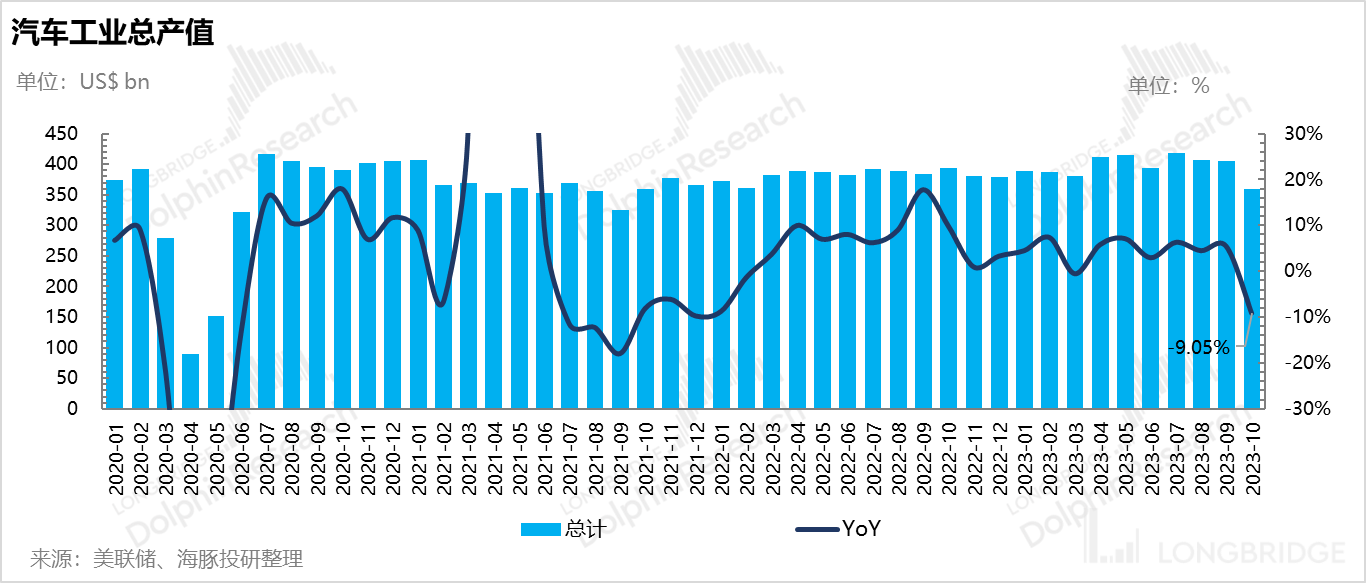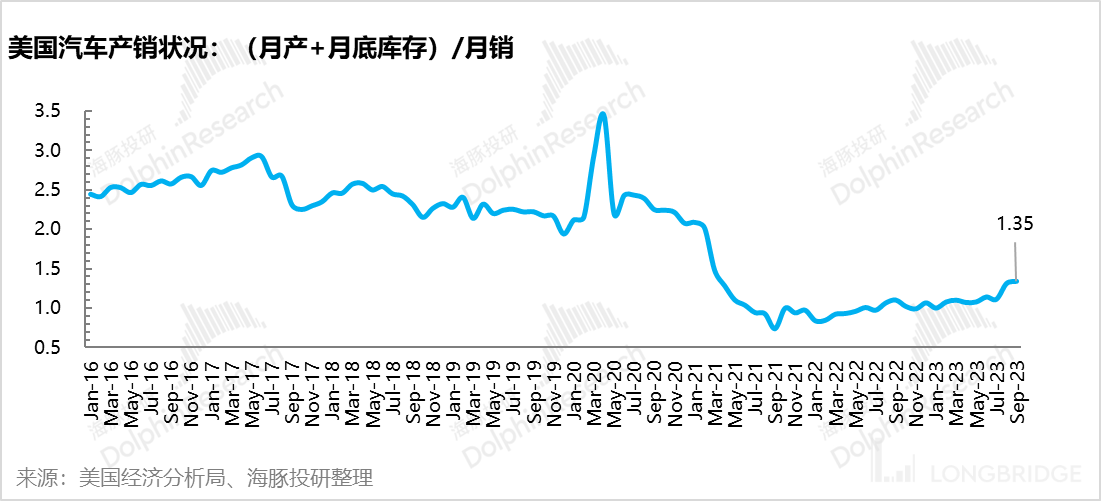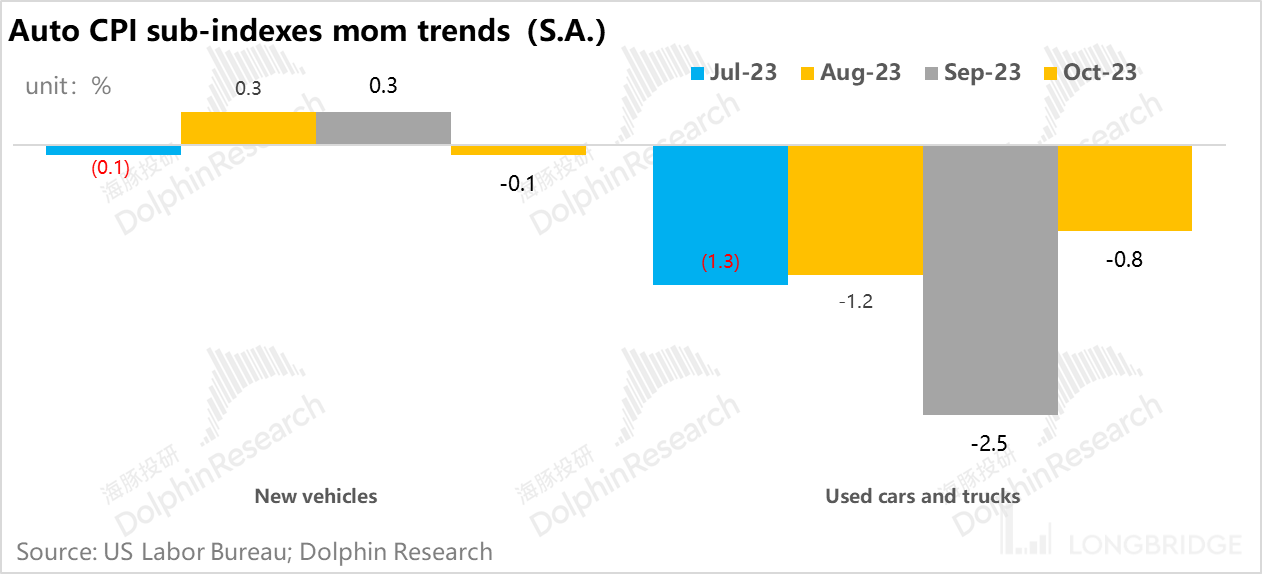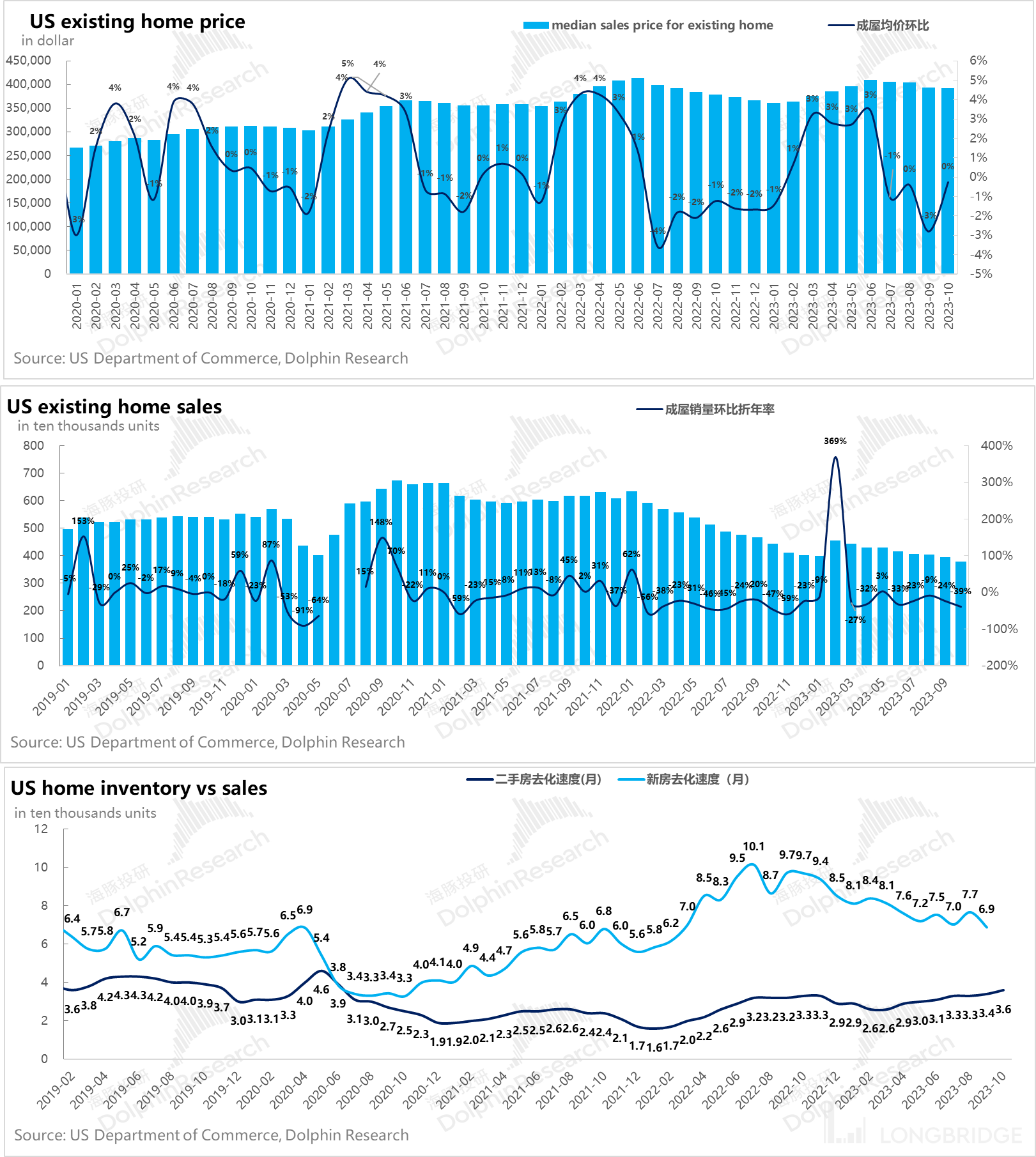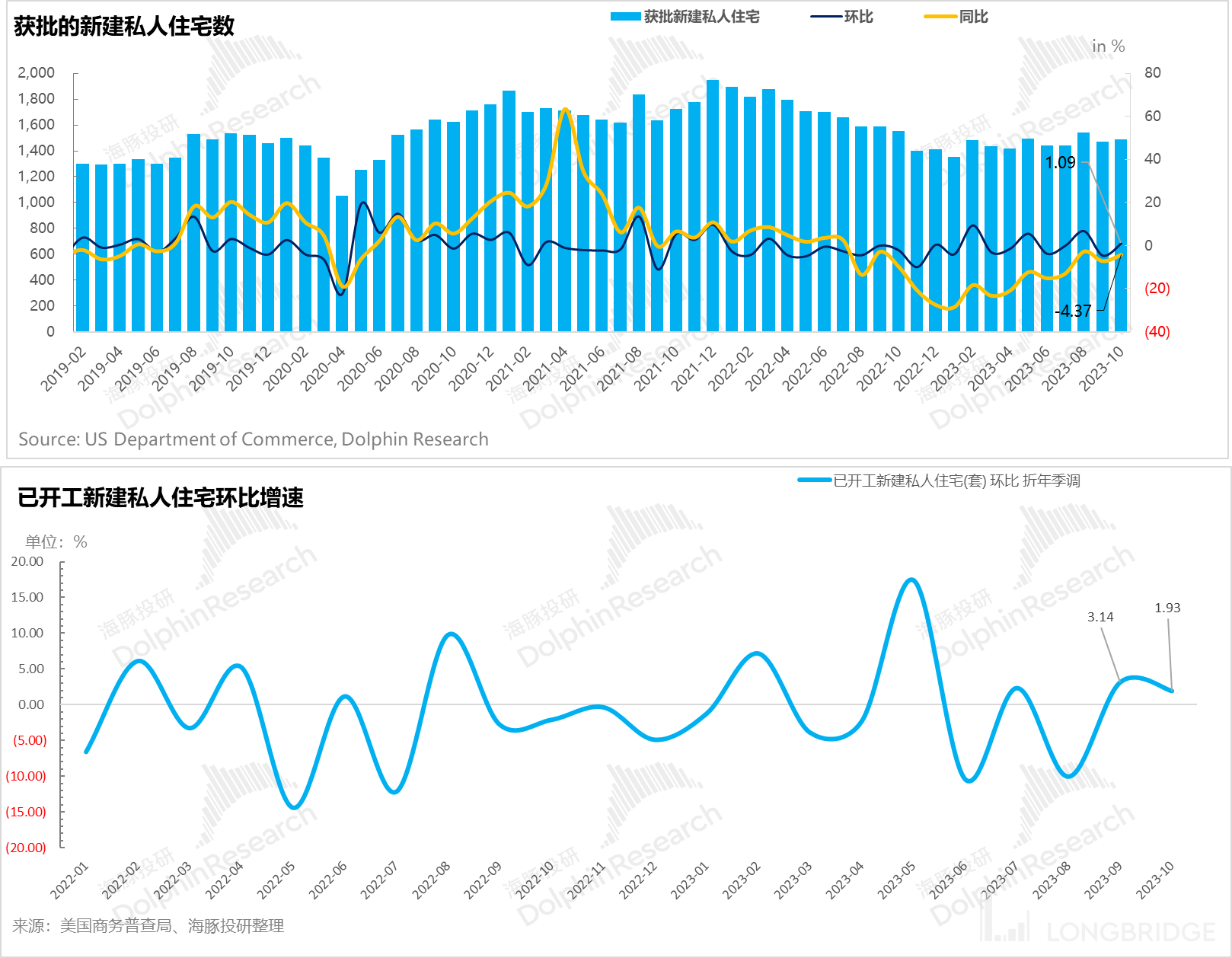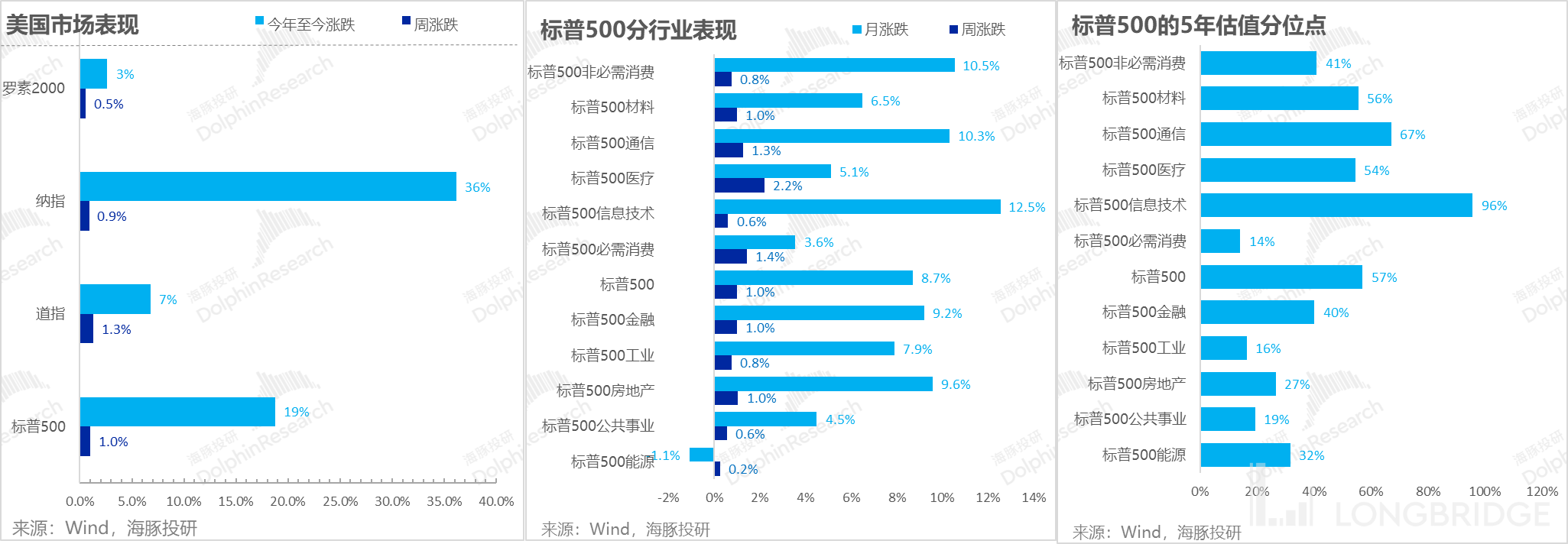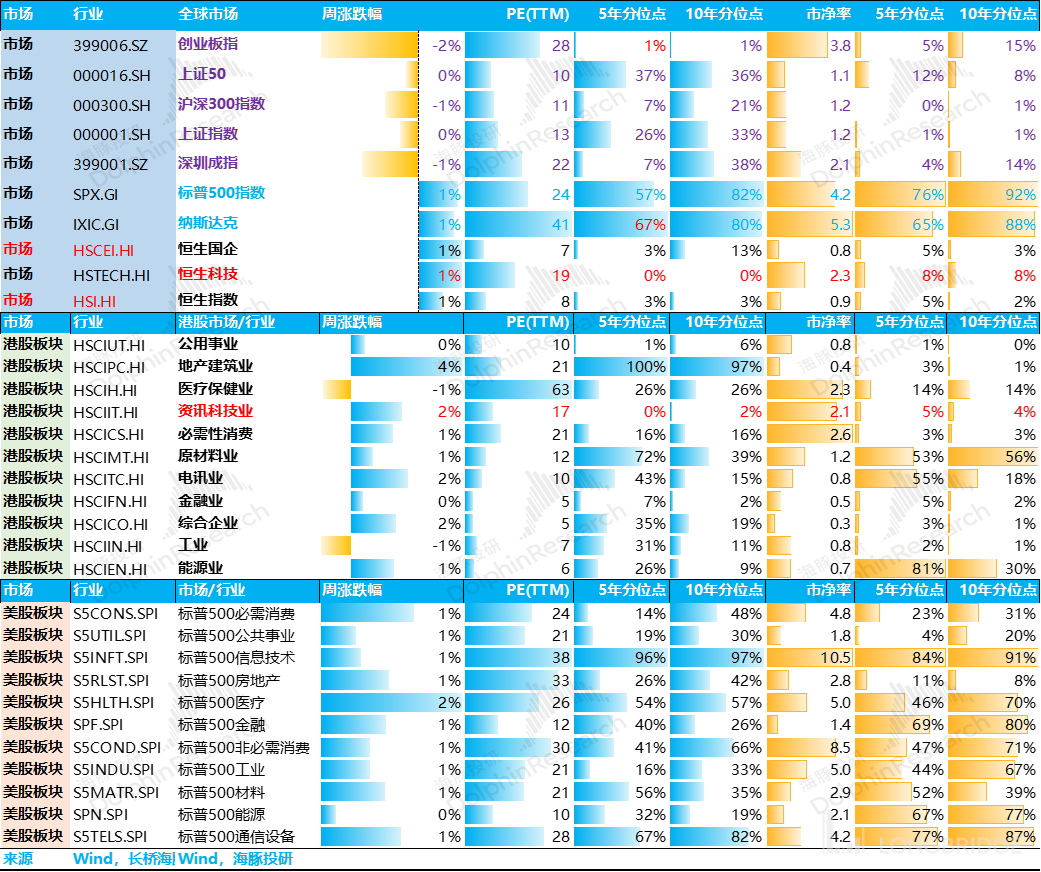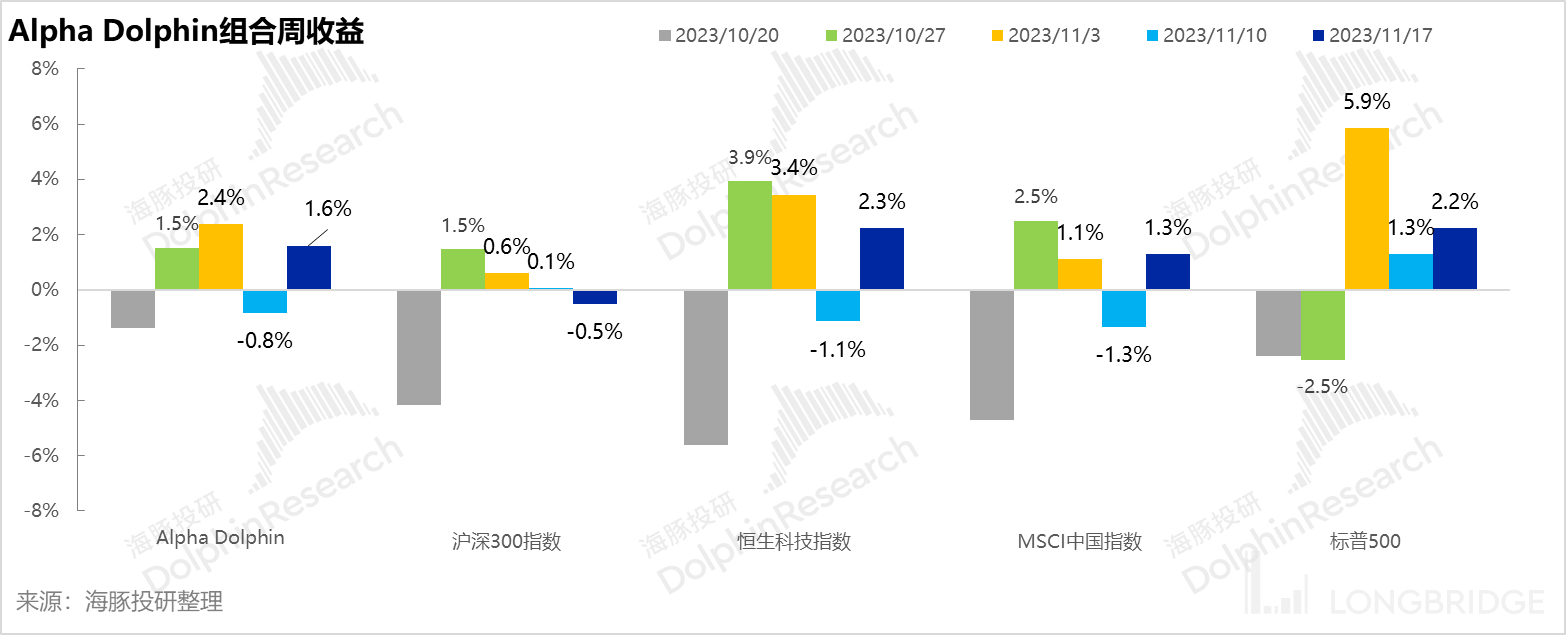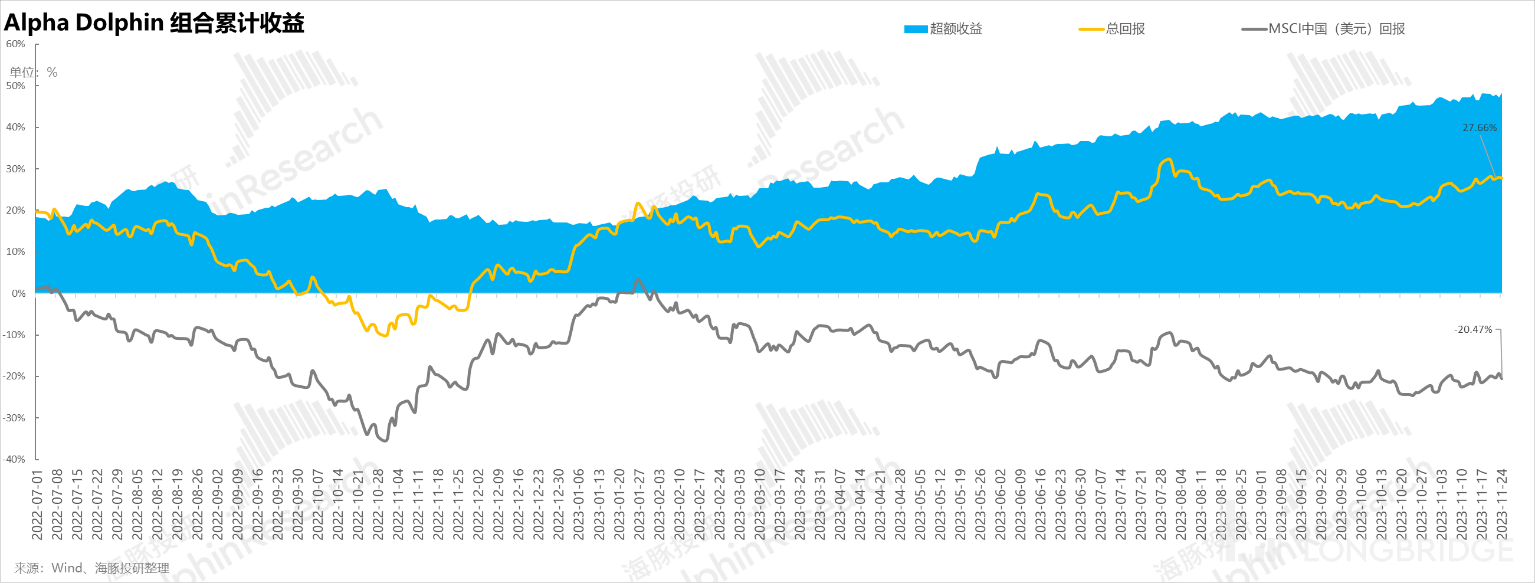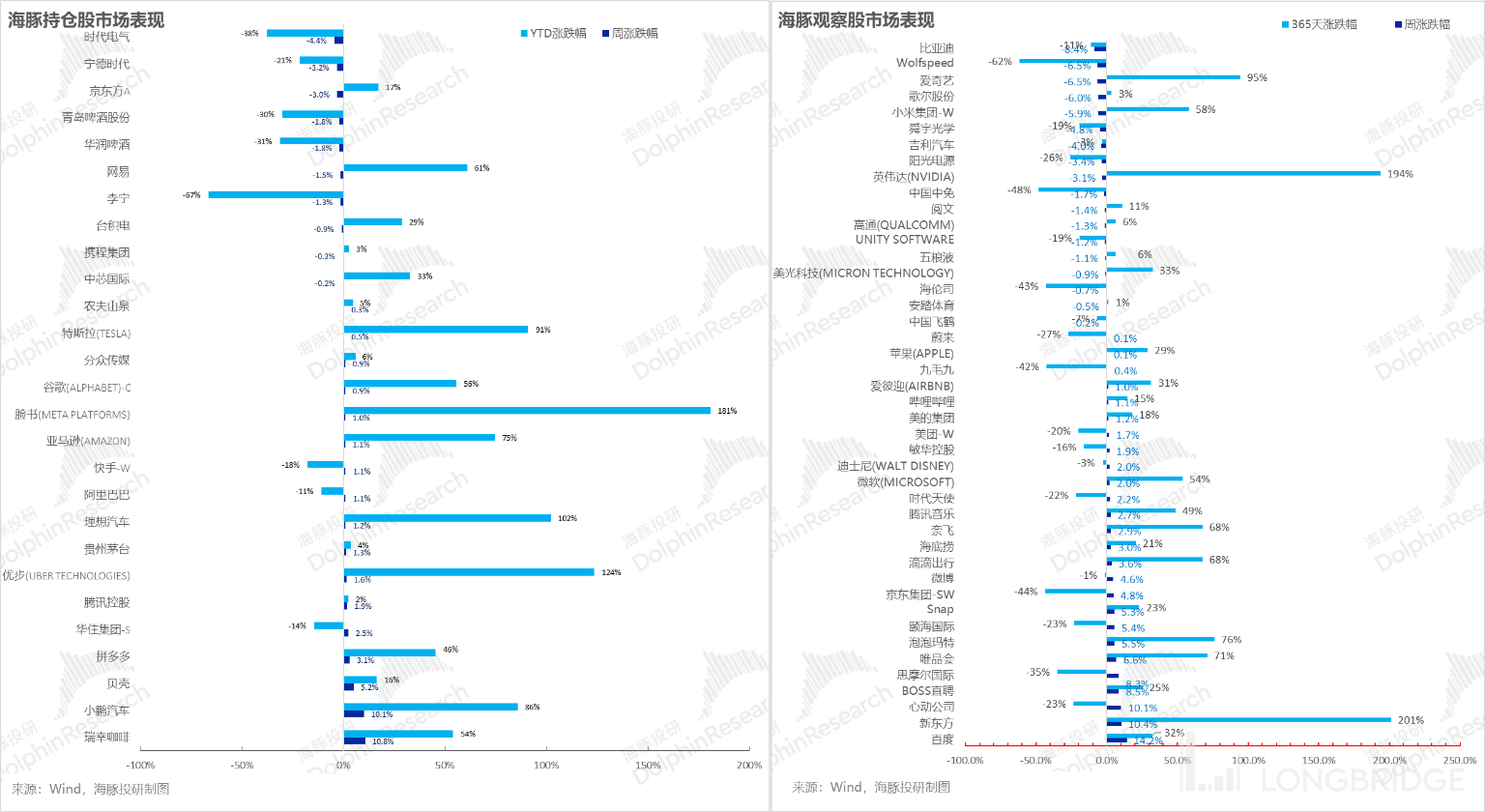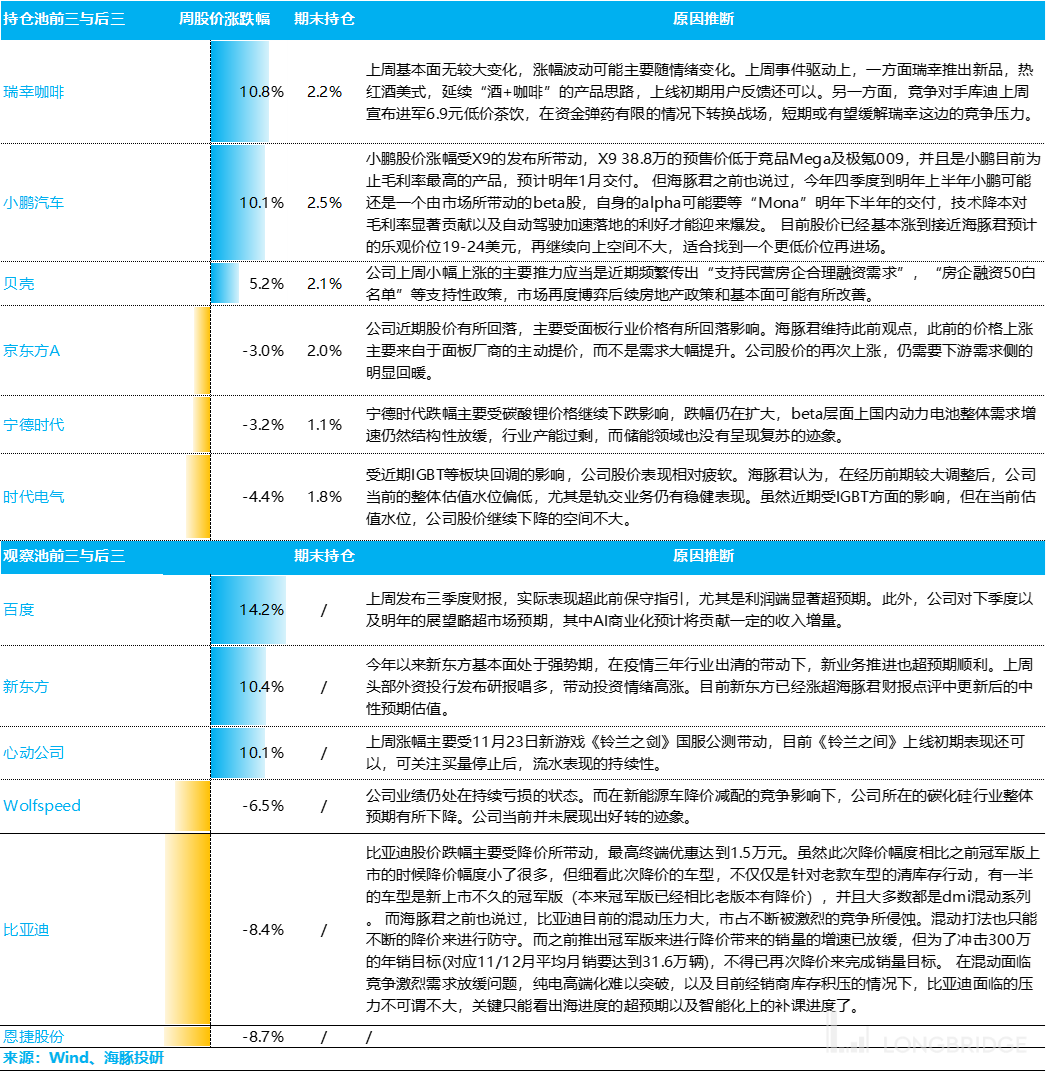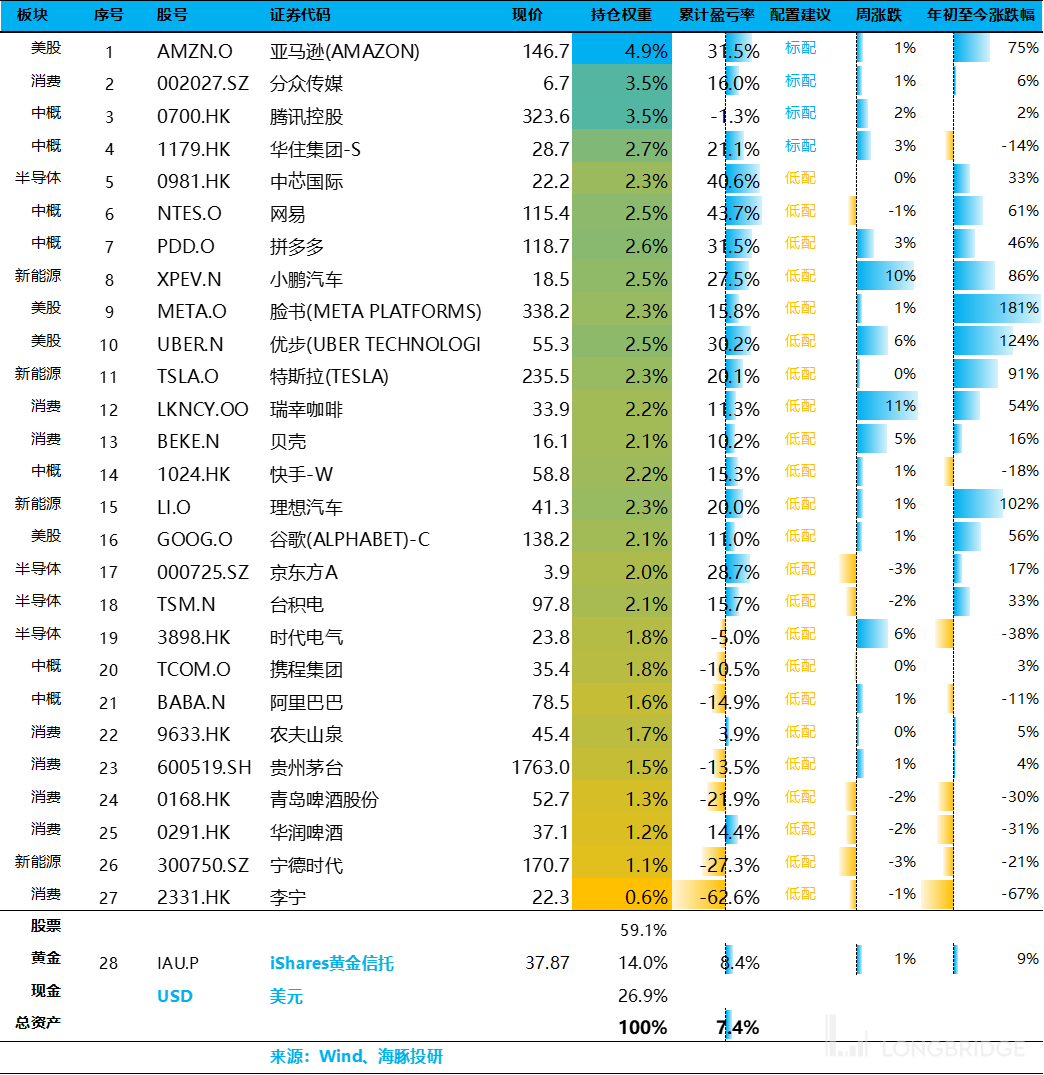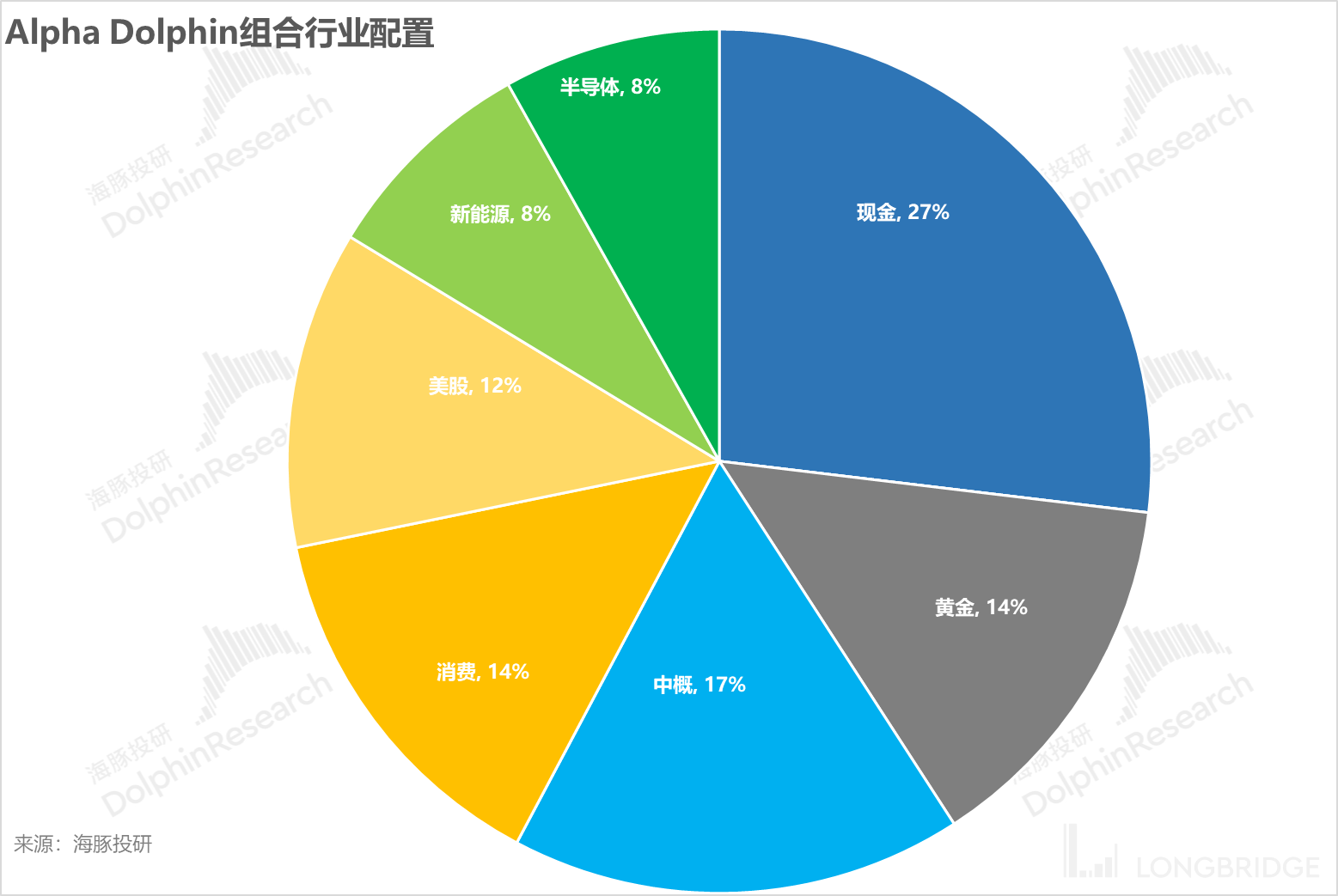
 Likes Received
Likes Received Posts
PostsUS stock Closing in On Overshoot, will China-concept Stocks Chance Come?.

Dolphin Research has previously expressed in its combination strategy that the US stock market will be in a relatively loose environment in the last quarter before the end of 2023, and even in the first quarter of 2024:
a. The demand for US Treasury bond issuance has temporarily weakened;
b. The inertia funds brought by the excess liquidity during the epidemic (reflected in the central bank's reverse repurchase balance) can still be sustained for a period of time, which will have a hedging effect on the sale of US Treasury bonds by the Federal Reserve;
c. The expectation of interest rate hikes has reached its peak, and the expectation of interest rate cuts is closely related to the macroeconomic fundamentals.
The progress of the fundamental analysis corresponds to the extent to which the expectation of interest rate cuts can be advanced, or whether the trading logic of valuation release from interest rate cuts will lead to the collapse of EPS and kill performance expectations.
Based on the fundamental analysis of the automotive and real estate sectors as of October, combined with the valuation level of US and Chinese assets, Dolphin Research's overall judgment is as follows:
1) In the case of simultaneous decline in prices of new and used cars, the capacity utilization rate of automobile manufacturing, which reflects the capacity contraction, indicates that as a high-interest-sensitive large consumer product, it is clearly facing demand weakness.
2) However, the state of the US real estate market in this cycle is that second-hand houses are scarce during the process of low interest rates and high prices, because the inventory of new houses in the previous decade has been thoroughly cleared, and the purchase of houses has instead shifted to new houses that can drive the economy. Therefore, the real estate sector is stubbornly resisting high interest rates.
3) In addition, the resilience of the consumer base is supported by the job market, but the fatigue of PMI, prices, and consumption data can already be seen, especially the weakening of consumption in the service sector, such as catering, and the issue of net layoffs. The momentum of consumption has reached the second half.
Taking all the above information into consideration, the clear picture at this stage (before the end of the first quarter of next year) is still that "while the demand for bond issuance is in a period of intermittent decline, there is still room for hedging in the sale of government bonds, and the pressure is not great. The economic fundamentals are still there, and the role of interest rate cuts is mainly to repair the valuation of equity assets."
4) However, in terms of the valuation and price-performance ratio of Chinese and American assets, the valuation of US stocks, represented by technology stocks, has climbed back to the peak of the previous wave, making it difficult to find a good price-performance ratio.
At the same time, the earnings season for Chinese concept stocks, which have been hit hard, is coming to an end, and the fundamental negative factors will soon be over. The valuation of technology stocks, which are the core of Chinese concept stocks, has reached the lowest point in the past five years.
In this situation, Dolphin Research believes that if the US economy further cools down and strengthens the expectation of interest rate cuts, Chinese concept stocks will have a higher upward elasticity than US stocks.
Below are detailed analysis:
I. Automotive: Musk's pessimism is not groundless
Those who follow Tesla know that Musk expressed his concerns about the economic outlook at the latest earnings conference (refer to "Tesla's Q3 Summary: Slow progress in CT, slow construction of factories in Mexico, Musk's bankruptcy phobia" link). And Dolphin Research has also mentioned before that the core factor that makes the US economy "headstrong" in the face of high interest rates is the special cycle brought by pillar industries.
Among them, the characteristic of the automotive industry is that under the requirements of epidemic isolation, the demand for automobiles has increased, but at the same time, the destruction of production capacity has distorted the supply-demand relationship of automobiles. After the epidemic, the continuous semiconductor shortage in 2021 has severely suppressed production capacity.
In 2022, the US automobile sales were more suppressed by insufficient production capacity, so in 2023, the US automobile production capacity has actually been in a state of repair, and the suppressed demand is also being released.
However, after reaching its peak in July, the capacity utilization rate did not stabilize in the range of 75-80%. In October, the situation took a sharp turn for the worse: the capacity utilization rate of the automobile manufacturing industry (seasonally adjusted) plummeted from 76% in September to 68%, and the production value of the automobile industry in October also declined significantly.


Behind the sharp decline in capacity utilization rate in October, marginal changes in the supply-demand relationship have actually been observed since the beginning of the month: according to data from the US Bureau of Economic Analysis, the monthly production and end-of-month inventory of US automobiles can basically supply 2 months of sales, especially in the tight supply of chips in 2021, some months even have production plus inventory that is not enough for one month's sales.
However, since August of this year, the production-to-inventory-to-sales ratio has started to rise, and combined with the continuous decline in the price of used cars in the sub-items of automobile prices, it has already reflected the rapid alleviation of supply-demand contradictions. Moreover, the continuous decline in the price of used cars has begun to drag down the prices of new cars, which have entered a downward trend.
These signals all indicate that starting from September and October, automobiles, as high-interest-sensitive durable goods, are clearly facing weak demand issues.


II, housing: 10 years of destocking has brought about strong survival capabilities
Compared to the deteriorating situation in the automotive industry, the housing market in the United States has remained relatively resilient. In terms of total volume, the annual sales volume of used cars and new houses is basically at 90% of the level in 2019.
However, in terms of structure, under the condition of a slight decrease in total volume, because interest rates in the United States have been rising from low to high, some landlords are unwilling to purchase assets at low interest rates to replace houses with high interest costs. The used car market is in a state of low supply and low transactions, and there is no significant inventory pressure. And due to the subprime crisis in 2008, American residents have significantly deleveraged their mortgage, and some housing demand has become relatively inflexible. In this situation, they can only turn to the new housing market.
Those who understand the domestic real estate market know that new housing, because it drives industries such as raw materials and construction, has a much greater impact on the economy than the transaction of second-hand cars. Therefore, this wave of American real estate is not exaggeratingly dragging down the economy.
So, under the high interest rates in the United States, the current state of the US real estate market is a shortage of second-hand houses, and the demand has been squeezed towards new housing transactions, which can better stimulate the economy. The performance of US home builders is also not bad.
Looking at the data for October, this judgment has not changed significantly. The prices of second-hand houses are stable, but the turnover continues to slow down, although it has not slowed down to the level before 2019.

As for the leading indicators related to new housing in October, the new housing market is still in a slow recovery phase. Currently, the resilience of the residential housing market is still very strong.

As can be seen, in terms of the two largest categories of expenditure, housing is still relatively strong, but cars are struggling under high interest rates. As for the other economic data in October, Dolphin Research has previously conducted relevant analysis:
Employment-related data, although there is a marginal slowdown trend, the labor supply and demand still face scarcity issues. Therefore, as a "earn and use" type of economy, this data still ensures that the economic fundamentals are intact.
PMI, prices, and consumption data, especially the weakening of consumption in the service sector, such as the restaurant industry, and the issue of net layoffs, have already shown that consumption momentum has entered the second half.
From a fiscal perspective, excluding the impact of education funding, fiscal expenditure continues to be stimulated by social security, interest payments, and the return of high-tech manufacturing, without significant convergence. Only fiscal revenue has increased, reducing the pressure of the deficit. If the fiscal deficit is to be reduced next year, it may be necessary to increase efforts on the fiscal revenue side, which may increase the tax burden on residents and enterprises.
Taking all the above information together, the clear picture during this stage (until the end of the first quarter of next year) is still that the debt issuance is in an intermittent period, and there is still room for hedging in the sale of government bonds. The pressure is not significant, the economic fundamentals are still intact, and the role of interest rate cuts is mainly for the valuation repair of equity assets.
III. How far has the valuation repair gone?
But the current core issue is how much valuation repair space is left? Looking at the S&P 500 index, after this month's vigorous valuation repair, the S&P 500 index has risen by nearly 10% now. Information technology sector has reached its valuation peak in nearly five years, and there is not much room for further growth. The phase of overall valuation increase has already passed. Therefore, from an industry perspective, we can only look for companies that still have relatively reasonable valuation and cost-effectiveness.

From a valuation perspective, the Hang Seng Technology Index, represented by the Hang Seng Tech, is still relatively undervalued. As of the end of this week, the negative impact of the earnings season has been largely released.
If the US consumer spending data and PCE data, which will be released this week, continue to weaken and further drive the renminbi exchange rate recovery, Dolphin Research believes that under the current valuation cost-effectiveness, the upward potential of Hong Kong stocks may be stronger than that of US stocks.

IV, portfolio adjustment
No portfolio adjustment was made last week.
V. portfolio returns
On November 27th, Alpha Dolphin's virtual portfolio had a 0.9% increase last week, outperforming the CSI 300 (-0.8%), and performing similarly to the S&P 500 (+1%), but weaker than the Hang Seng Tech (+1.1%) and MSCI China (+1.3%).

Since the start of the portfolio testing until the end of last week, the absolute return of the portfolio was 28%, with an excess return of 48% compared to MSCI China. From the perspective of asset net value, Dolphin Research's initial virtual assets were $100 million, and it is currently $130 million.

VI, individual stock profit and loss contribution
In fact, from last week's trading, it can be seen that as the valuation of US technology stocks reaches its peak and the negative impact of Chinese concept asset earnings season is largely released, and with the recovery of the renminbi exchange rate.
Valuation cost-effectiveness has begun to return to Chinese concept assets. Chinese concept assets with good fundamentals and relatively low valuations have started to rise. For example, companies like New Oriental, Luckin Coffee, Xiaopeng Motors, Beike, Pinduoduo, and Vipshop, which are on the list of top gainers, are all companies with cheap valuations and good performance.

For the companies in Dolphin Research's portfolio and watchlist, Dolphin Research analyzes the major changes in stock prices and possible reasons as follows:

VII, Distribution of Portfolio Assets
This week, Alpha Dolphin's virtual portfolio did not make any adjustments and held positions in 27 stocks, with four of them being core holdings and the rest being underweighted equity assets, with the remaining allocation in gold and US dollars.
As of last weekend, the asset allocation and equity holdings of Alpha Dolphin were as follows:


VIII, Key Events of the Week
This week marks the end of the Chinese concept stock earnings season, with only two major companies, Pinduoduo and Meituan, as well as Bilibili. The focus will be on whether Pinduoduo can exceed expectations, and the change in attitude towards new business for Meituan.

Risk Disclosure and Statement for this Article: Dolphin Research Disclaimer and General Disclosure
For recent weekly reports from Dolphin Research, please refer to:
"The Resurgence of the 'Sun Never Sets' Belief in US Stocks, Is it Reliable this Time?"
"High Interest Rates Fueling Consumption, Is the US Really Thriving or Just Hype?"
"The Second Half of the Fed's Tightening, Neither Stocks nor Bonds Can Escape!"
- JD.com brings down Chinese concept stocks? The crux lies in the three highs of US stocks
- Technology makes a comeback: Can US stocks replicate the brilliance of the first half of the year?
- The Federal Reserve's "iron fist" keeps pounding, US stocks can't hold on anymore!
- The second half of the year is lackluster for US stocks, Chinese concept stocks are waiting
- Don't panic, the bottom for Chinese concept stocks may have already arrived
- US unemployment rate rises, hope for Chinese concept stocks
- Inflation vs. skimming, the second half of the year won't be easy
- Is the US government spending money like water? The backlash has arrived
- The "brotherhood" behind NVIDIA and Tesla, can it still exist in the second half of the year? "Is there redemption for Hong Kong stocks?"
"Fitch is just a 'paper tiger', Chinese concept stocks still have hope"
"After the violent rebound, should Hong Kong stocks stay or leave?"
"With the US interest rate hike reaching its peak, is there hope for Hong Kong stocks?"
"Reality strikes, how far can Chinese concept stocks rebound?"
"Take a longer view, will the US interest rate hike exacerbate stagflation?"
"Decoding the mystery of low savings in the US, is it sustainable?"
"US housing market: The original sin of subprime, why is it resilient this time?"
"Unraveling the recession: Where did it go after being mentioned, and can it come back?" 《Is the small essay market biased? Extreme pessimism followed by overcorrection is the core》
《Purgatory vs. Celebration, what are the US and Hong Kong stock markets really trading?》
《US stocks pull up valuations, Hong Kong stocks kill beta? Don't despair, a reversal is imminent》
《 Deposit high interest rates in another bank? The probability of a soft landing has increased instead》
《 ChatGPT vs. Performance Release, can giants support the US stock market?》
《 Is the plan of "US recession, China recovery" going down the drain?》
《 The direction of US recession is set, only a minor decline is pleasing, a major decline is harmful》
《 US service consumption collapses, US stocks celebrate?》《Fed Rate Cut: Just Waiting for the Moment of Attack by the US Version of Yu'ebao?》
《US Stocks Are Going to Decline and Cut Interest Rates? Anyway, Trading Has Already Run Ahead》
《 Silicon Valley Bank Run Crisis: Is the US Recession Running to the Scene?》
《 US Stocks Give Up Trading and Run Ahead, and the World Can Finally Breathe a Sigh of Relief》
《Inflation Rising is Confirmed? Adversity Brings Opportunity》
《 Putting Inflation Aside, Signals in Alibaba and Baidu are More Important》
《 Hong Kong and the US Are Both Weak, and the Wolf is Coming Again?》
《High-frequency Macro as a Puppet, US Stocks are a Puppet Market》
《 A Yang Line Changes Faith, Tesla Leads US Stocks to Come Back?》
《 How Far is the "Danger" and "Crisis" of US Stocks?》《Is the hammer of performance just around the corner when US stocks don't have a "red New Year"?》
《What's behind the stagnant US stocks?》
《Has CPI fallen back enough for the Fed to be at ease?》
《Is it easy to eradicate service inflation? Beware of market overcorrection.》
《Hong Kong stocks finally have a backbone? Independent market still has further upside potential.》
《Darkness before dawn: the mentality is focused on darkness or dawn.》
《Can emerging markets bounce around for much longer as US stocks are hit hard by reality?》
《Global estimate repair is good news? There are still performance checks to be made.》
《China's asset violence pulls up, while China and the US are two different worlds.》
《Did the giants Amazon, Google, and Microsoft fall? Meteor showers still fall on US stocks.》
《Policy shift expectations: unreliable "strong US dollar funding" GDP growth?》《Southern takeover vs Northern escape, another test of "determination"》
《Slow down rate hikes? The American Dream is shattered again》
《 Reintroducing a "Iron-blooded" Federal Reserve》
《 Sad second quarter: "Eagle voice" is loud, collective crossing is difficult》
《Falling to doubt life, is there still hope for despair to turn around?》
《 The world has fallen again, and the root of the disease in the United States is a shortage of people
《The Federal Reserve has become the number one bear, and the global market has collapsed》
《A bloodbath caused by a rumor: risks have never been cleared, finding sugar in glass slag》
《The layoffs are too slow to pick up, and the United States must continue to "decline"》 《US Stocks: Celebrating Funerals - Recession is Good, Strong Rate Hikes are Negative》
《Entering the Second Half of Rate Hikes, Opening of "Earnings Thunder"》
《Epidemic Strikes Back, US Faces Recession, Funds Change Their Minds》
《Current Chinese Assets: "No News is Good News" for US Stocks》
《Is Growth Already a Carnival? Does it Mean the US is Definitely in Recession?》
《The United States in 2023: Recession or Stagnation?》
《US Oil Inflation, Can China's New Energy Vehicles Grow Stronger?》
《Faster Rate Hikes by the Fed, Opportunities for Chinese Assets Emerge》
《US Stock Inflation Goes Off the Charts, How Far Can the Rebound Go?》
《Starting from the Ground Up, Longbridge Dolphin Investment Portfolio is Launched》
The copyright of this article belongs to the original author/organization.
The views expressed herein are solely those of the author and do not reflect the stance of the platform. The content is intended for investment reference purposes only and shall not be considered as investment advice. Please contact us if you have any questions or suggestions regarding the content services provided by the platform.

